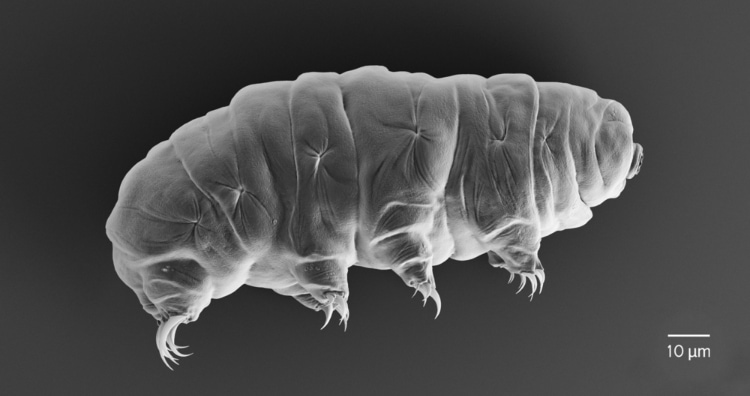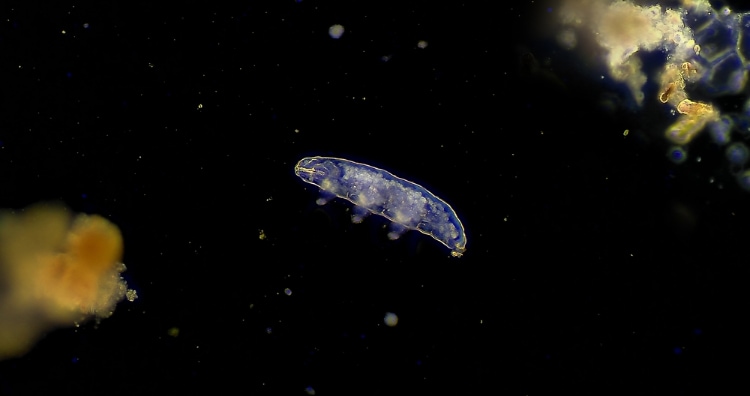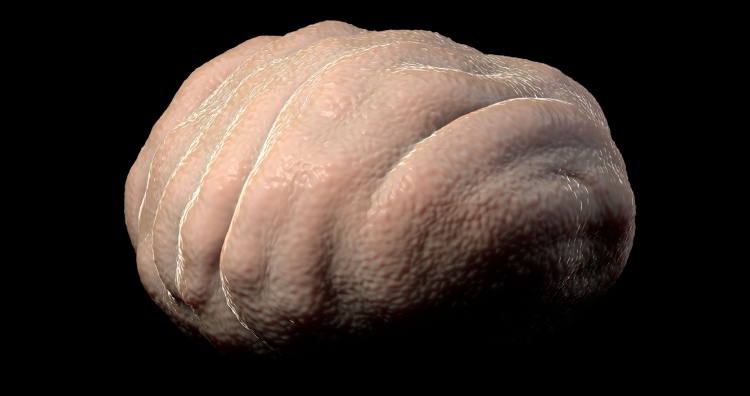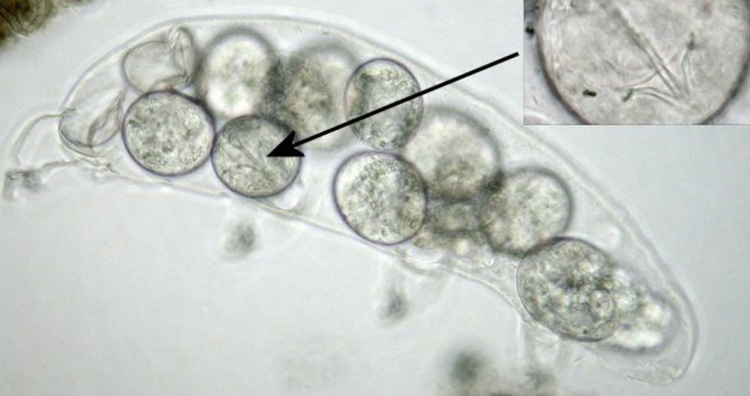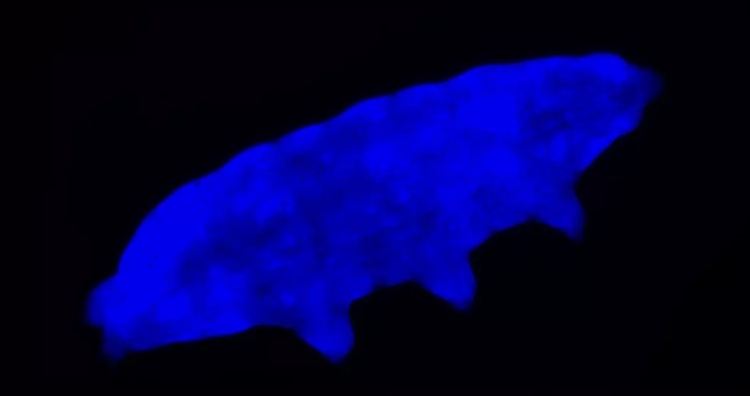30 Interesting Facts About Tardigrades
Tardigrades are tiny, microscopic, cute, eight-legged micro-organisms that are potentially the pioneers of life on Earth. They are the toughest animals on the planet regardless of their size. They can go into hibernation mode for years and wake up and go back to their lives as if nothing had happened. Interesting, isn’t it? Deep dive into some interesting facts about tardigrades.
Table of Contents
1/30
The tardigrades are as small as 0.002 inches and at maximum can grow up to 0.05 inches. They are usually never bigger than 0.04 inches.
Tardigrades are tiny organisms. They are microscopic but large enough to rarely be seen with the naked eye. The maximum size of a tardigrade is only 0.05 inches. Even though the creature is extremely tiny, they are the most adaptive creature on the entire Earth. They are unique and can survive in any condition known to man. (source)
2/30
Tardigrades are minuscule creatures that are at the edge of visibility for the normal human eye.
These animals are microscopic and difficult to detect. They are less than 2mm in size and are transparent creatures. They are see-through but still are visible to the naked eye, though they are tiny and difficult to spot. They are found living in algae, mosses, lichens, etc. (source)
3/30
Tardigrades are barrel-shaped and are often nicknamed ‘water bears’ for their movement closely resembling a bear strolling around.
Tardigrades are small organisms that are colloquially called “water bears.” They’re also called “moss piglets.” Their walk was studied by scientist Johann August Ephraim Goeze. The walk resembles a bear’s gait. and that’s where they got their nickname. These eight-legged microorganisms are found everywhere from volcanoes to the deep sea. They are the most resilient animals in nature. (source)
4/30
The actual word “tardigrade” means “slow-paced.”
The origin of the word “tardigrade” came from the Latin word that roughly translates to “sluggish to walk.” They are also called “slow steppers.” They are related to arthropods that are found in the soil in ditches. They are slow-moving creatures nicknamed “little water bears”. (source)
5/30
Tardigrades can move their heads without depending on their bodies, and some have eyes.
Tardigrades have five segments in their body. Four pairs of legs without any joints and sucking disc claws at the end of each leg. They walk slowly. and their stout legs help them with their habitual movement. Each pair of legs is fitted with claws. and the claws have a strange, medieval-time-creature look. It looks like hooked weaponry. The hindmost leg of a tardigrade is attached backward, which is not found in any other animal. These legs are used for grasping and acrobatics other than walking. (1, 2)
6/30
Tardigrades come out of their eggs with fully formed adult cells.
Tardigrades eggs hatch in less than 14 days. The minuscule creatures hatch from their eggs in fully adult form. The newborn comes out of the egg possessing the whole of their adult cells. Most of their organs are fully developed either before or a few hours after they are squeezed out of their eggs.
Tardigrades are eutelic organisms, i.e, once they reach maturity, the number of cells in their body will be fixed. These organisms do not grow with cell division such as most other organisms. They are born with their complete adult cells, and they grow by cell enlargement. (1, 2, 3)
7/30
Scientists have found tardigrades in an Antarctic subglacial lake where evidence of life is very rare.
Dead tardigrades were found in the South Pole 3,200 feet underground. This might increase the implications that tardigrades once lived underground. (source)
8/30
Tardigrades can go without any water or food for up to 30 years.
They are capable of suspending their metabolism for years only to later restart their metabolism to reproduce, forage, and rehydrate. Tardigrades can become a lifeless ball. (source)
9/30
Tardigrades are generally considered aquatic, but they can also be found in environments like sand dunes, rocks, and soil.
Tardigrades survive in any moisture-filled area and are commonly found living on them absorbing the film of water on them. They can remove all the moisture and stay dehydrated for years in a hibernated stage and can come back alive with just a slight exposure to water. (source)
10/30
Tardigrade DNA characteristics, like protection from damaging x-rays and radiation, can be transferred to human cells for enhancing our protection.
Repair and protection of DNA are fundamental in many human diseases. With the DNA machinery of tardigrades being duplicated in human cells, we can reduce the effect of radiation therapy in the future. These characteristics can also protect workers in nuclear facilities and also make crops grow in extreme conditions with further deep studies. (source)
11/30
Cryptobiosis is a state of extreme inactivity in response to adverse environmental conditions. This “tun” state can withstand minus 200 degrees Celsius to 148 degrees Celsius. A range that could kill almost any other organisms.
Tardigrades are micro organisms that are widely regarded as the world’s toughest animals. Under unfavorable conditions, some species can enter into a tun state, a form of cryptobiosis, which can withstand extreme pressure, desiccation, radiation, and even the vacuum of space.
Tun formation requires the metabolism and synthesis of a protective sugar known as “trehalose,” which moves into the cells and replaces lost water. While in a tun, their metabolism can lower to less than 0.01% of normal. In the cryptobiotic state, all metabolic procedures stop, preventing reproduction, development, and repair. (source)
12/30
The tun state in tardigrades became an inspiration for scientists to increase the efficiency of LED and solar lights.
When tardigrades are in their dehydrated stage, they can form a glass-like coating as a protective layer. When all the water from their body is removed, they quickly coat themselves with glassy molecules under any temperature conditions. They coat essential parts of their bodies with glass. Until it comes in contact with water again, they can retain this stage. The findings helped scientists with further studies to slightly increase the efficiency of solar cells and LED lights. (1, 2)
13/30
Tardigrades are fully capable of reproducing sexually as well as asexually.
Studies concluded that even if some of the tardigrades species are made up of males only, they can still multiply. The tardigrades are mostly able to asexually reproduce. The reproductive mechanism changes with species living in different habitats. (source)
14/30
Tardigrades can withstand ionizing radiation 100 times stronger than a lethal dose for humans.
Tardigrades are made for extreme conditions. They can live in harsh conditions and even in sub-zero temperatures. It can withstand up to -273 degrees Celsius and extremely hot conditions of 150 degrees Celsius. (source)
15/30
The tiny indestructible creature has a glowing shield or fluorescence that shields it from harmful UV rays.
One particular species of tardigrades are found to have a luminous shield that can help protect themselves from ultraviolet radiation. The fluorescence helps them like a sunscreen; they transform the damaging UV rays into blue light. (1, 2)















